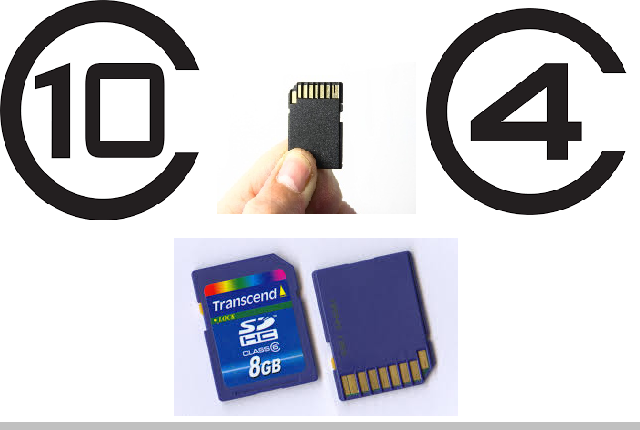
We live in the digital era where memory cards are extensively used. Smartphones, digital cameras, laptops, music players, tablets, and other devices use memory cards for saving and transferring data. But did you know that not all memory cards are created the same way?
Different types of memory cards have different sizes, capacities, and speed classes. Sizes and capacities you know. But classes? Let’s see what it is, along with the overall comparison of Class 4 and Class 10 cards.
Class 10 Vs Class 4 Memory Card
Let’s get to the basics first – the class rating for a memory card is the minimum write speed. Speed classes are used by manufacturers to measure SD cards’ speed. So, a Class 10 and Class 4 memory card mainly differs in the minimum writing speed.
- Class 10 memory card will support sustained writing at 10Mb/s, while a Class 4 memory card will support sustained writing at 4Mb/s
Here’s a table comparing Class 10 and Class 4 memory cards:
| Parameter | Class 4 memory card | Class 10 memory card |
| Write speed | 4Mb/s | 10Mb/s |
| Tasks | Ideal for storing and transferring data, playing movies and songs.
Suitable for high-definition video recording. | Suitable for full HD video recording.
Ideal for HD still consecutive recording. Continuously shoot full HD video without lags. |
| Price | Cheaper (depends on card size) | Reasonable (depends on memory card size) |
What Can Be Concluded About Class 4 and Class 10 SD Cards?
By now, you would have learned that the main difference between Class 4 and Class 10 memory cards have serial data writing speed. Although a Class 4 SD card has a minimum speed of 4Mb/s, the card can actually reach a higher speed. This is because the speed mentioned is not the actual speed, but the minimum speed. So, speed is just the basic guideline for differentiating between different classes.
So Finally, Which one is Best – Class 10 or Class 4 Memory Card?
Well, that depends on how you want to use them.
- If you want a memory card to store and transfer files, watch videos, and play music, then you can go for a Class 4 SD card. However, if you want to use it for digital cameras on a regular basis, then look for Class 10.
- Class 4 can be used for HD video recording, including full HD video recording. But if you are looking for continuous shooting, HD still images, and full HD video recording, then go for a higher quality like a Class 10 memory card.
- The next factor to consider is the price. If you are on a budget, then go for Class 4. Otherwise, if you are ready to shell out a few bucks, then get a Class 10 SD card. It’s better for tasks like HD video capture and burst photography.
Going by the stats, we can say that Class 10 has faster data transfer speeds. So if you are someone on the go, need to constantly transfer files, continuously shoot videos, and then Class 10 is for you.
Precautions to be Taken While Using Memory Cards:
However, whether it is class 4 or class 10, you will have to use memory cards in a proper way. For using the Eject option while removing, check the memory cards’ available memory & camera battery before starting to record video or before transferring files.
This is because; any interruptions during the transferring process will lead to the loss of video files. If important images or HD video files are lost from your Class 10 or Class 4 memory cards, then you can recover them with Video File Recovery software. The tool retrieves videos from digital cameras, smartphones, camcorders, etc.
Frequently Asked Questions
The difference between SD, SDHC, and SDXC is the capacity of storage on the cards and the compatibility with the devices.
The Speed Class and UHS Speed Class are two different rating systems for the minimum write speed of memory cards.
To protect your SD card from damage:
1. Avoid exposing it to extreme temperatures, moisture, and physical shocks.
2. Make sure to format the memory card regularly to keep it in good condition.
3. Eject properly after using it.